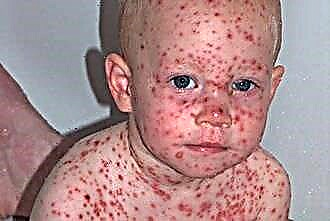When a chemical or mechanical factor affects the nasal mucosa, snot is produced more actively. However, they do not change their color. Colorless discharge can indicate both an allergic and a viral rhinitis, without complication of an infection of bacterial origin. But green nasal discharge in an adult, as well as yellow and brown ones, speak volumes about the developing inflammatory process and additional infection.
The color of the secretion secreted from the nasal passages helps to clarify the diagnosis made by the doctor. For example, green snot is a typical sign of a bacterial infection. The more intense the green rhinitis, the longer it develops in the nasopharynx.
What do they mean
 Patients who want to understand their condition often ask the doctor why green snot occurs in an adult. It's all about leukocytes. They are the main fighters against diseases provoked by bacteria. These cells eliminate harmful bacteria and die in such a battle themselves. Too high a concentration of leukocytes in the nasal secretions - that's why the snot is green or yellow. A thick discharge in an adult usually signals the progression of an infection. Most often, green nasal discharge is one of the signs of bacterial rhinitis.
Patients who want to understand their condition often ask the doctor why green snot occurs in an adult. It's all about leukocytes. They are the main fighters against diseases provoked by bacteria. These cells eliminate harmful bacteria and die in such a battle themselves. Too high a concentration of leukocytes in the nasal secretions - that's why the snot is green or yellow. A thick discharge in an adult usually signals the progression of an infection. Most often, green nasal discharge is one of the signs of bacterial rhinitis.
If you do not take action in time, such a runny nose leads to the development of:
- sinusitis of various types;
- bronchitis;
- sinusitis;
- otitis media.
One of the most common reasons why green snot can develop in an adult is meningococcal infection. If you find such a symptom in yourself, you should immediately consult your doctor. He will write out a referral for a number of tests and, based on their results, prescribe adequate and effective treatment.
 What else do they mean in an adult? If there are no other symptoms besides the colored discharge, then it is likely that green mucus from the nose appears due to the detrimental effect on the mucous membrane of the environment in which the person is, or the "chemistry" inhaled by him. In this case, snot with a smell may come out. No special treatment is required, but it is still recommended to go to an appointment with an otolaryngologist to consult a doctor on the question - if green snot, what does it mean.
What else do they mean in an adult? If there are no other symptoms besides the colored discharge, then it is likely that green mucus from the nose appears due to the detrimental effect on the mucous membrane of the environment in which the person is, or the "chemistry" inhaled by him. In this case, snot with a smell may come out. No special treatment is required, but it is still recommended to go to an appointment with an otolaryngologist to consult a doctor on the question - if green snot, what does it mean.
If he confirms that green nasal clots are not in any way related to the infection, you will need to pay much more attention to your nasopharynx. Now she will need more frequent hydration and cleansing. It is very good for prevention to increase the time spent in the fresh air.
Associated symptoms
Traditionally, a runny nose lasts about a week. If it drags on and does not go away even on the 10th day, this means that complications have appeared. A runny nose in an adult, in principle, can occur much earlier - on the 3rd or 4th day. At the same time, the general condition deteriorates significantly: there is an increase in nasal congestion, nasal breathing becomes difficult, and headaches occur. Green snot and temperature in the complex often indicate that intoxication is developing in the body.
A runny nose with green snot in an adult can also be a symptom of sinusitis. In this case, it is complemented by local soreness in the sinus area, redness of the skin above it and external swelling.
If such discharge appears in the morning in an adult, you should immediately consult an otolaryngologist. Only a qualified doctor should treat such a cold, including smelly green snot. After all, only an experienced specialist can prescribe antibiotics. And you can hardly do without them.

How to treat
Before you start loading the body with medicines, it is recommended to try alternative methods that can not only help get rid of a cold, but also heal the entire body as a whole. In some cases, they help to eliminate the green rhinitis in adults without drugs.
 Extend your outdoor time. It is advisable to choose parks, squares, groves, forests - in general, ecologically clean places.
Extend your outdoor time. It is advisable to choose parks, squares, groves, forests - in general, ecologically clean places.- Arrange regular hygienic rinsing of the nasal passages with ordinary salt solution. In autumn and winter, it is recommended to lubricate them with an emollient and antiviral ointment (oxolinic ointment can be used).
- At home, you need to do wet cleaning every day and use a humidifier (it's great if it works with an ionizer).
- Increase your fluid intake (this should be clean drinking water).
- Make hardening to the best of your body's capabilities.
- All these activities usually help if the nose is stuffy and green discharge has just begun to flow from it. But if the severity of the symptom is very bright and the disease does not recede, but, on the contrary, develops, you still have to agree to conservative treatment.
 The best option for drug treatment is complex therapy. After it, you will forget for a long time what green snot means. First of all, you need to choose the right nasal drops. An excellent combination has proven itself, which includes a liquid for vasoconstriction (known to many as "Rinazolin" or "Nazol") and a saline solution. The latter should be instilled into the nostrils 10-15 minutes after the introduction of the first drug into the nasal passages. True, you should first blow your nose thoroughly in order to clear your nose as much as possible.
The best option for drug treatment is complex therapy. After it, you will forget for a long time what green snot means. First of all, you need to choose the right nasal drops. An excellent combination has proven itself, which includes a liquid for vasoconstriction (known to many as "Rinazolin" or "Nazol") and a saline solution. The latter should be instilled into the nostrils 10-15 minutes after the introduction of the first drug into the nasal passages. True, you should first blow your nose thoroughly in order to clear your nose as much as possible.
Almost always, a bacterial infection affecting the nasopharynx is associated with a previous infection with the virus. This means that medications from the antiviral category can be used for medicinal purposes - for example, the well-known "Arbidol", "Anaferon", "Amiksin" or "Amizon". And yet, if color discharge appears, a sign of what it is - the doctor must decide. After all, you need to be treated competently and correctly - in order to avoid complications.
If it turned out that the cause of the appearance of green discharge from one nostril in an adult or from both was an allergy, it is necessary to undergo treatment with antihistamines of the II or III generation - for example, "Levocytirizin", "Loratadin" or "Fexofenandin".
Let's summarize
So where does green snot come from? The main reason for their appearance lies in infectious diseases of the nasopharynx. However, they are not always a 100% sign of the development of an infection. Therefore, if you are only concerned about these secretions, and any other symptoms are completely absent, then the polluted environment and the unsatisfactory condition of the mucous membrane are probably to blame for their occurrence, when the secreted secretion loses its ability to eliminate bacteria.
For effective treatment and prevention, it is necessary to improve the mucous membrane. To achieve the desired result, it is necessary to constantly moisturize the nasopharynx, ventilate the room, and regularly cleanse the nose from the thick secretions that accumulate in it.
If you adhere to these rules, you can hope that the colored snot will disappear without the use of "heavy artillery" in the form of medicines.

 Extend your outdoor time. It is advisable to choose parks, squares, groves, forests - in general, ecologically clean places.
Extend your outdoor time. It is advisable to choose parks, squares, groves, forests - in general, ecologically clean places.

